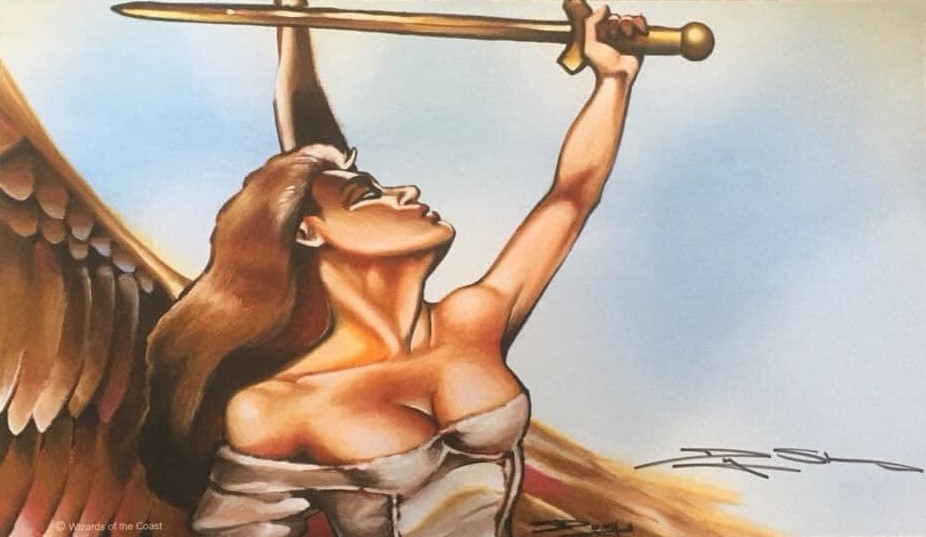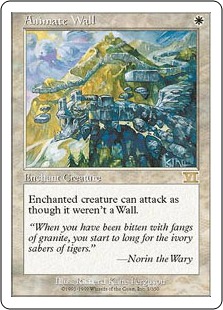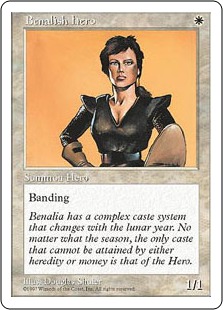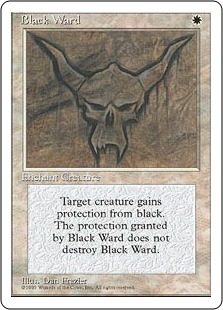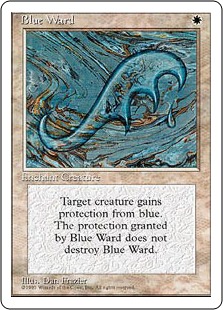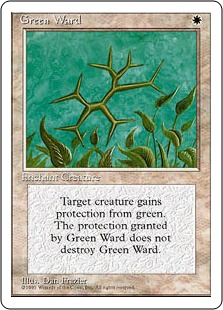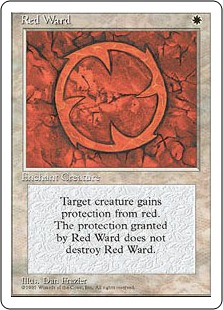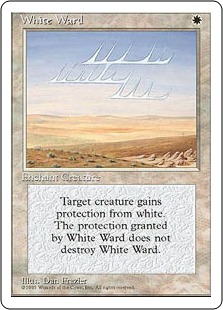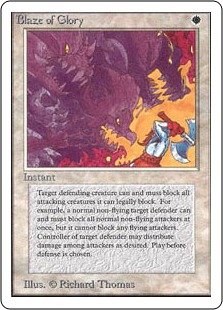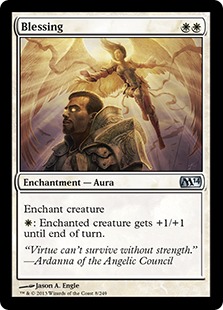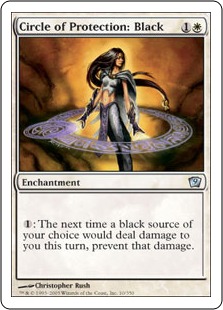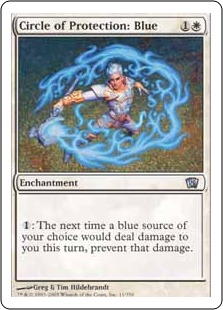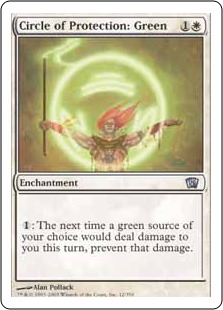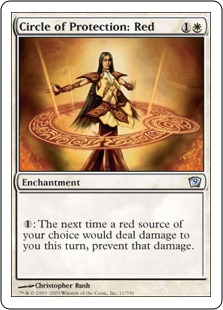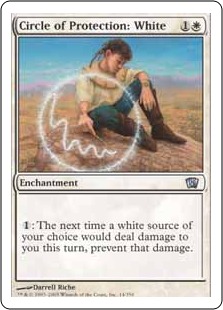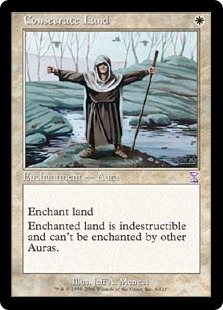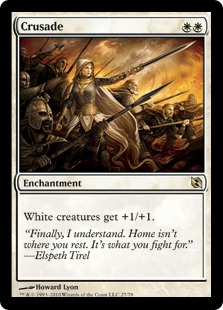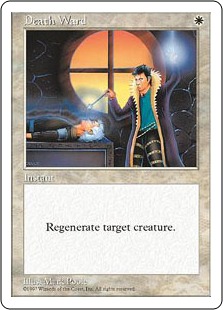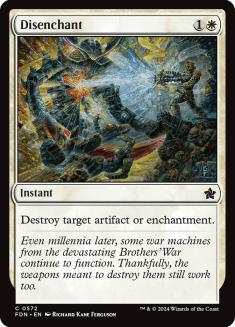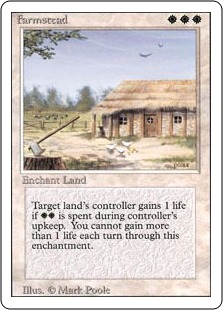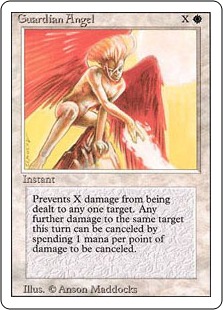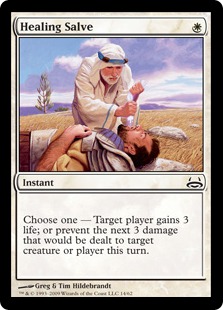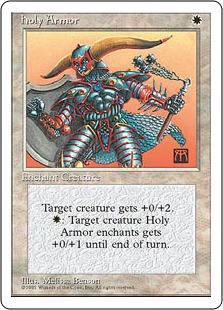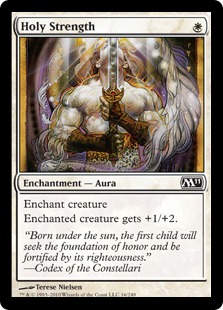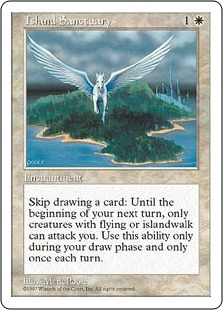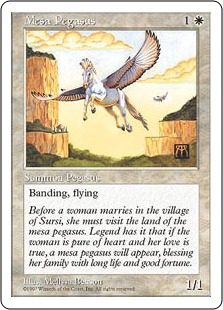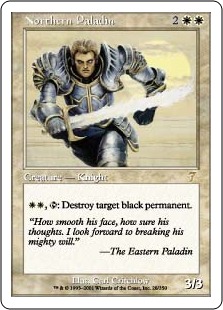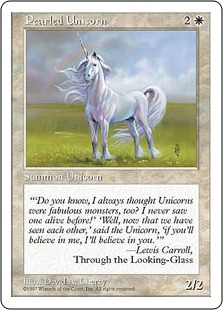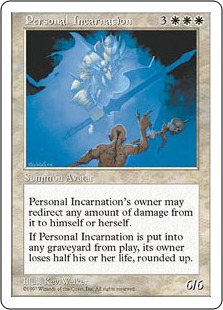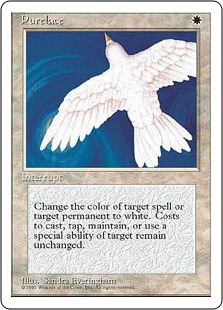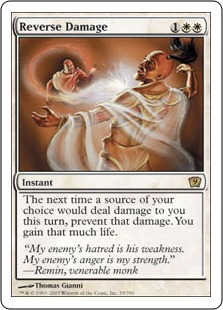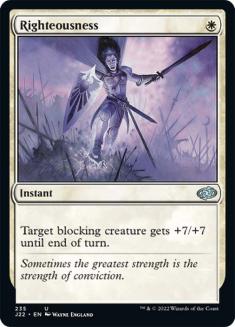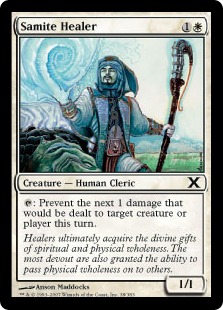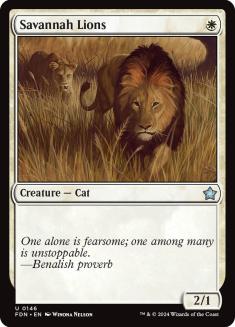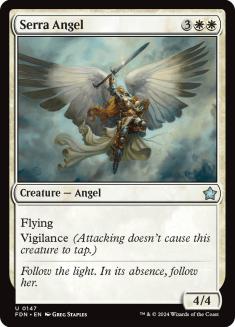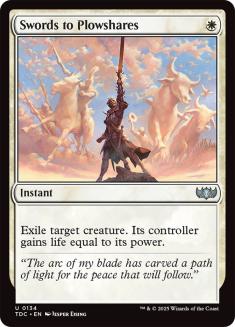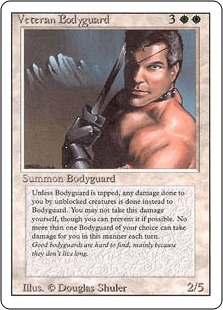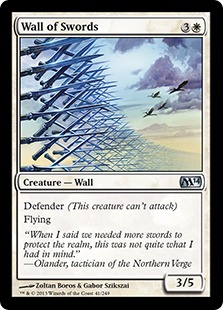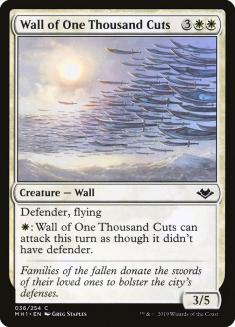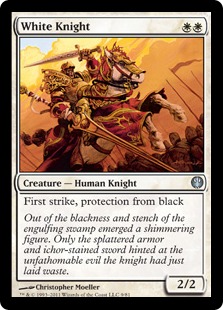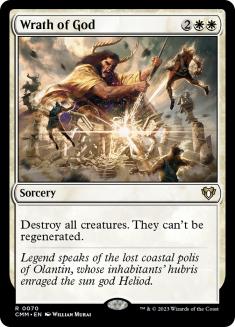I’m pretty active on Magic Twitter. The other day, Shivam (@ghirapurigears) posted up the following comment:
The responses were mostly along the line of these replies:
I’ve been playing the game since 1994. While the color pie has changed over time, my memory is telling me that the core tenets of each color’s identity were pretty firmly established even when the game first came out. Mark Rosewater recently wrote a very comprehensive guide about the color pie. Since he’s literally from inside Wizards of the Coast (WotC), I’m going to take his word for everything listed in this article.
To see if memory is playing a trick on me, I went back through all of the early Magic sets to take a deep dive into every single card. In today’s article, I’m going to look at white in Alpha/Beta/Unlimited — the very first Magic set(s). In future articles, I’m going to see how the color pie evolved over time until it reached what I would consider a pretty firm understanding of “this color does X, but does not do Y”.
White
Looking through Magic history, the ability for creatures with defender to attack as though they didn’t have defender has been split pretty evenly between white, blue and green, with a small, small dip into black.
While Mark lists land destruction as primary in red and tertiary in black and green, he doesn’t address mass-land destruction (the ones he talks about are generally single target). White has a long history of destroying most or all lands, including Armageddon, Cataclysm, and most recently Fall of Thran. Red is currently the primary color of mass land destruction, but WotC has tried to shy away from this sort of ability in general since it’s unfun to sit in a game with no lands. I’m going to count this as on-color.
A huge part of white’s color pie identity is equalizing things to make the game more fair for one (or more) players. Even to this day, we’re still seeing this play out in almost every set. The iteration these days is more towards “catch up the players who are behind” than “punish the players who are ahead.” For instance, Priest of the Blessed Graf and Archaeomancer’s Map are two cards that let you catch up if an opponent is ahead on a resource.
The idea of Balance is absolutely on-color for White. The execution of Balance is completely off-color though. White does still make people destroy creatures based on selective information (By Invitation Only, Cataclysmic Gearhulk, Celestial Judgment), but the discard and land destruction elements of Balance are off-color.
The banding ability has been relegated to the dustbin of history for being too complicated and not adding enough to the game for its complexity level. Virtually every creature with banding ever printed is in white, so this is firmly a card in white’s color pie.
Protection is a mechanic that spans from Alpha to present. This is a primary white ability. And while all five of these cards individually are pretty weak — Flickering Ward would consolidate all five other wards, and improve on them — all five of them are good fits for the white color pie.
The ability to block multiple creatures is a primary white ability. It does show up in other colors as a flavor bleed (Two-Headed Dragon, Watcher in the Web), the majority of creatures and effects that allow you to block 2+ creatures in combat with a single creature are in-color with white.
White is a primary on creatures getting +N/+N on auras. This is typically reserved for spells that grant a one-shot boost. Blessing was reprinted as recently as the Magic: 2014 edition. I don’t think this ability is used much as an aura anymore. Auras of this type tend to scale depending on permanents in play, like Born to Drive. With that said, I feel that this would still be an on-color effect to print on a white card if WotC were to go in that direction today.
Giving a defensive bonus to your creatures is completely on-color for white.
Damage prevention? Still a primary color pie trait even to this day in white! While WotC doesn’t like damage prevention to go so wide as to shut down entire colors anymore, this effect would still be first and foremost in white.
Preventing an opponent from destroying lands was a piece of the white color pie back in 1993, and is still a piece of the white color pie in 2022. It isn’t revisited as much these days because there is a lot less land destruction, but Sacred Ground would be a perfectly reasonable card to see reprinted in a newer set without causing anyone to bat an eye.
The idea that each color specifically has hosers for an enemy color started in Alpha, and continues to this day. There’s even a cycle of these in Streets of New Capenna! The newest iterations usually are single-target effects that are either cheaper, or give a bonus, against specific enemy colors (see: Knockout Blow, Fry, Veil of Summer). Even though this isn’t an effect that WotC would probably do right now (changing land types from one to another is usually blue), the color-hosing aspect is spot-on.
This is a core white effect — a global enchantment that grants creatures +1/+1 — and one that continues to be reprinted at least every year. Glorious Anthem is the most well known and basic of these effects.
Regeneration is another keyworded ability that has basically been retired due to complexity issues. Regeneration on creatures primarily went to green and black. The ability to regenerate other creatures or to regenerate as a one-shot effect was pretty firm in white. This includes Metallurgeon, Poultice Sliver, Pteron Ghost, Vigilant Martyr, and Gore Vassal. While this isn’t expressly discussed in Mark’s color pie article, I think that one-shot regeneration effects like this are probably primary in green and black, and secondary or tertiary in white.
Call it Naturalize or Disenchant, the ability to kill either an enchantment or an artifact on a single card at instant speed has been a staple of white (and later green) throughout Magic’s history. Depending on the block, the effect may move to sorcery or white might be restricted to enchantments. In general though, Disenchant is not a color bend.
Really bad life gain effects? I mean Ajani’s Mantra is Farmstead at one mana cheaper, no mana to activate, and without needing to enchant a land. Yes, this is a white card through and through.
Damage prevention and life gain are staples of white’s color pie. Both of these cards could be printed today and would be right in home in what people think of as white’s type of spells.
Pretty standard creature auras. Both are well within the definition of white gets for enchantment-level creature pump at one mana.
There are a lot of go-wide effects that WotC tries to avoid. There are generally effects that shut down entire strategies at too low of a cost. These include other cards I’ve mentioned in this article like Armageddon. This also includes “you can’t be attacked”. These effects are usually attached to a one-shot instant/sorcery, or cost a lot more than two mana — for instance, Blazing Archon costs nine mana!
With that said, the “you can’t be attacked” subset of cards almost always fall to white. Blue taps creatures down (Frost Lynx), green prevents combat damage (Fog effects), but white keeps things from attacking to begin with (Pacifism).
Trading a card draw for preventing an attack is very white. While I don’t think Island Sanctuary would be reprinted anytime soon due to power level concerns, I also think that we just saw Solitary Confinement in Modern Horizons 2, and that was the furthest conclusion of where Island Sanctuary would be. And that effect? White white white!
On-point for color-hosing black, but out of flavor for how it does it. This is the first card in Alpha/Beta/Unlimited that I feel clearly breaks the color pie. Compare this to Justice.
Both are four-mana enchantments that hose a specific enemy color. Justice deals damage by turning a spell (or effect) back on its controller. Karma just sits there and deals massive damage to anyone with swamps turn after turn. Red is the color that punishes people who control certain types of land through damage. Green is tertiary in this ability, but this is not something white gets. So for those keeping tally, Karma is the first card so far that is a color pie break.
Lance, on the other hand, gives first strike. First strike is a primary white color pie ability. Works for me!
Small flying creature with upside ability? In this case, banding? Still something that white gets in most sets. Hi there, Sky Crier!
Northern Paladin: Hosing black is on target. Let’s talk out the rest of this card. White is allowed to one-shot destroy black permanents. White is allowed to get a creature that would sacrifice to kill a black permanent. What I don’t know is if white would be allowed to get a creature these days that repeatedly destroys a permanent type as a tap ability.
White has gone more towards one-shot effects, that work off of a creature entering the battlefield. This then has a backup of flicker and self-bounce effects. These days, I think Northern Paladin would just read WW2, 3/3: When Northern Paladin enters the battlefield, destroy target black permanent. So I’m ruling this one a heavy bend. The effect would be done up to the point where it could be self-activated every turn.
Pearled Unicorn: What is the correct power/toughness for a vanilla white creature with a mana cost of 2W? It’s higher than 2/2, as almost any creature printed at this mana cost / power / toughness combination has additional abilities. Here are the different permutations we’ve seen through the years at this exact mana cost:
One power
Two power
- Pearled Unicorn
- Alaborn Trooper
- Those Who Serve
Three power
These days, I think that the safe rate is probably getting a vanilla 2/4 or 3/2 creature for 2W. I don’t think we’d see a 4/2 in white, as that power/toughness ratio is more reserved for green and red at three mana.
White’s had a long history of creatures that tie life totals to the largest top-end of its curve. Unfortunately, it took a long time to get from Personal Incarnation to Serra Avatar or Loxodon Lifechanter. The damage redirection aspect of Personal Incarnation is certainly white. The drawback of losing half your life when Personal Incarnation dies is absolutely black. I couldn’t see this card being printed as-is with the current color pie. It would surely be a Orzhov card, probably at four or five mana. I’m going to consider this our second break, due to the drawback.
Given that Purelace is part of a five-color cycle of cards, is it considered a break? Changing the color on other creatures is a blue ability, and a creature self-changing colors is a green ability. Could I see WotC printing a card like Purelace in a color-matters set like Shadowmoor? Absolutely! There was an entire cycle that temporarily shifted colors on a creature (Niveous Wisps). These cards didn’t permanently change colors though. I’m going to rule that this is a break until such a time that WotC actually makes a set that lets white permanently change the colors of other permanents. If this said “Until end of turn”, I’d have ruled bend. That makes three breaks total so far.
Black and white both reanimate creatures at around the same mana cost. It’s weird comparing Resurrection to Zombify, but there it is. We’ve seen several variants on this effect in white the past couple of sets, with the foremost comparison in my mind being Invoke Justice. So yeah, this is an effect where white is a primary.
The wording on Reverse Damage is really archaic, so let’s turn to the Oracle wording.
“The next time a source of your choice would deal damage to you this turn, prevent that damage. You gain life equal to the damage prevented this way.”
And that, my friends, is absolutely a white ability.
Giving a blocking creature a huge temporary boost is still in white’s color pie. While +7/+7 is probably larger than would be given these days, it wouldn’t be completely out of place in the current Magic design landscape.
Targeted repeatable damage prevention isn’t something printed often anymore. When it was printed — white! If WotC ever wanted to bring back this sort of effect, I even imagine that Samite Healer would be reprinted as-is!
For a long time, Savannah Lions were the biggest one-drop vanilla creature you could get without a drawback. It took 15 years after Savannah for WotC to start printing 2/1 creatures that had upsides. White still gets 2/1 creatures for one mana, so Savannah Lions is absolutely on-color for the mana cost to power/toughness ratio in this color.
The most iconic white creature of all time is still being reprinted even to this day — as recently as Jumpstart 2020!
While undoubtedly powerful, Swords to Plowshares is still in the color pie even today. White is allowed to kill opposing creatures for cheap, as long as the opponent is getting something in return. Path to Exile is essentially Swords to Plowshares with a steeper drawback. Path to Exile is reprinted multiple times a year in supplemental sets. Path of Peace is the more balanced version of Swords to Plowshares.
Not only is this sort of damage prevention white, the drawback is actually pretty sophisticated against something R&D might tack onto a defensive white creature even to this day!
White is the color that gets larger creatures with defender. Wall of Swords fits into white’s color pie. I could even see them printing this card as-is with an added ability to allow the wall to attack, if Wall of Swords were printed today.
First strike — white. Protection from black? White! Two mana for a 2/2 creature? Yup, White Knight could be reprinted even to this day and slot right into the uncommon slot of a set.
To this day, killing all creatures at once are known as wrath effects. Some Wrath of God variant makes it into almost every set. Depopulate from Streets of New Capenna is just the latest in an unbroken line of creature-kill spells from Wrath of God to present!
The final count is that there are only three breaks out of the first 46 cards from the original Magic sets:
At a future time, I’ll take a look at blue and see how that color looked in Alpha. I will say that for being nearly 30 years old, that first Magic set really seems to have set a standard that has stood up years later!

